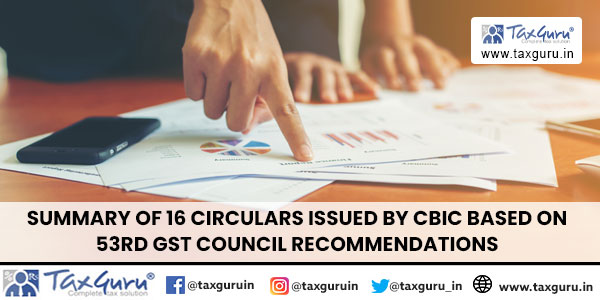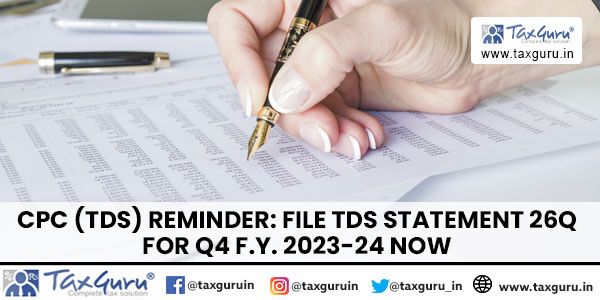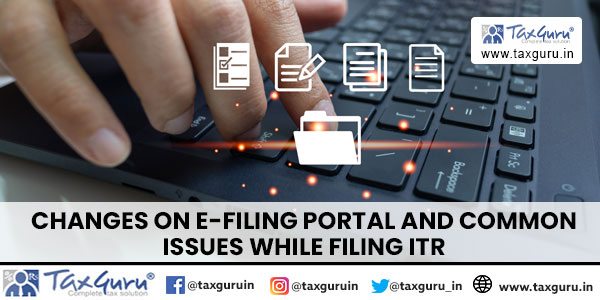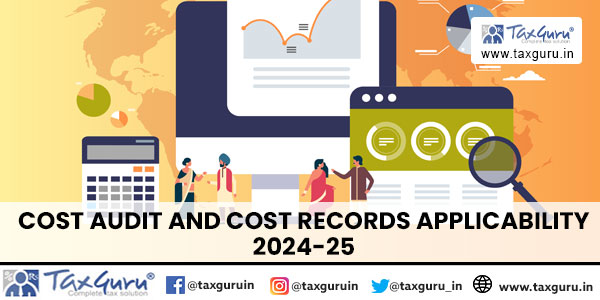Case Law Details
State Vs Chukkapally Prasad (Telangana High Court)
Telangana High Court held that the accused officer is entitled to acquittal as the prosecution failed to prove the guilt of the Accused Officer with substantial and constructive evidence that he had demanded and accepted the bribe.
Facts-
This Criminal Appeal, under Section 378 (3) & (1) of the Code of Criminal Procedure, 1973, is filed by the State, aggrieved by the judgment, dated 21.06.2012, passed in C.C.No.09 of 2006 by the First Additional Special Judge for SPE and ACB Cases cum V Additional Chief Judge, City Civil Court, Hyderabad, whereby, the Court below acquitted the Respondent /Accused Officer of the offence under Sections 7 and 13(I)(d) r/w Sec. 13 (2) of Prevention of Corruption Act, 1988.
The Accused Officer was working as Excise Inspector Prohibition and Excise Station, Amangal in Mahabubnagar district. On an auction conducted for running wine shops in Amangal village in the same district, the first and second prosecution witness became the highest bidders and paid 1/3rd of the amount and on the procedure for paying the balance, a form was submitted before the accused SHO of the Excise Station. During the submission of the form the AO demanded a bribe of Rs. 4000/- from them @ Rs. 2000/- for each shop in order to put his signatures on the check memos.
An FIR was registered on the report of first prosecution witness. Later on, the accused officer was caught with the phenolphthalein test by the authorities and was arrested u/s. 7 and 13(I)(d) r/w Section 13(2) of the Prevention of Corruption Act, 1988. But the court acquitted the officer observing that prosecution has failed to prove guilt on the accused beyond reasonable doubt.
Conclusion-
Here in the case on hand, the prosecution failed to establish the very establishment of the shops by P.Ws.1 and 2 in the door numbers mentioned in the Form VI since they are found to be incorrect on verification that the alleged door numbers do not exist in the ward numbers mentioned by them. So the case of the defence that P.Ws.1 and 2 have misrepresented before the authorities in mentioning the door numbers. So the very root of the prosecution case is doubtful.
Further, PW.2 who is a material witness to the prosecution being a licence holder, turned hostile to the prosecution case, since he stated that the Accused Officer never demanded any bribe from him and he was not aware of the bribe offered to the Accused Officer by P.W.1. In those circumstances, the very demand of bribe, offering and recovery of tainted amount from the Accused Officer creates doubt.
From a glaring observation of the entire record, it is established that the prosecution failed to prove the guilt of the Accused Officer with substantial and constructive evidence that he had demanded and accepted the bribe. Since the prosecution failed to establish its very root of the case about demand and acceptance, presumption under Section 20 of the Act cannot be drawn. Since the demand is not constructively proved, acceptance and recovery of the same cannot be believed. There are so many omissions and contradictions in the evidence of prosecution witnesses and the defence could succeed in establishing the same.
For the foregoing discussion, this Court is of the view that the prosecution failed to establish the guilt of the accused for the offences charged under Sections 7 and 13(1) (d) r/w 13 (2) of the Act, 1988 and accordingly he is entitled to acquittal.
FULL TEXT OF THE JUDGMENT/ORDER OF TELANGANA HIGH COURT
This Criminal Appeal, under Section 378 (3) & (1) of the Code of Criminal Procedure, 1973 (for short, ‘Cr.P.C’), is filed by the State, aggrieved by the judgment, dated 21.06.2012, passed in C.C.No.09 of 2006 by the First Additional Special Judge for SPE and ACB Cases cum V Additional Chief Judge, City Civil Court, Hyderabad, whereby, the Court below acquitted the Respondent / Accused Officer of the offence under Sections 7 and 13(I)(d) r/w Sec. 13 (2) of Prevention of Corruption Act, 1988 (for short, ‘the Act’).
2. Heard Sri T.L.Nayan Kumar, Learned Standing Counsel-cum-Special Public Prosecutor for A.C.B. cases and Sri A.Phani Bhushan, learned counsel for the Respondent / Accused Officer and perused the record.
3. The case of the prosecution, in brief, is as follows:
The Accused Officer was working as Excise Inspector in the Prohibition and Excise Station, Amangal in Mahabubnagar district by the time of the alleged trap on 14.06.2005. On 06.06.2005, PWs.1 and 2 participated in the auction held in the Mahabubnagar district for the annual lease for running the wine shops in Amangal village and became the highest bidders for a total lease amount of Rs.13,90,888-00. As per the terms of auction, they had deposited an amount of Rs.4,65,000-00 as on the date of the auction towards 1/3rd amount of the highest auction bid amount for those two shops and the remaining 2/3rd amount was to be paid within two days along with the bank guarantees, duly filled application forms under Form VI-A and also the blue prints of the shops wherein the businesses had to be carried out. They had to submit these forms before the SHO of the Excise Station, who had to forward the same to the Sub-divisional Prohibition and Excise Officer, who had to be the further scrutiny and to forward the same to the Superintendent, Excise Department, Mahabubnagar for sanction. Accordingly, PW1 and 2 approached the A.O., being the SHO of the Excise and Prohibition Station, Amangal on 06.06.2005 with their applications and blue prints of the buildings, but, the AO demanded a bribe of Rs.4000-00 from them @ Rs.2000-00 for each shop in order to put his signatures on the check memos. The AO took the check memos along with other agreement forms under Form V-A submitted by PWs.1 and 2 and kept with him.
PWs.1 and 2 expressed their inability to comply with the illegal demand of the A.O., but they persuaded the AO by contacting him on phone from time to time. Finally on 12.06.2005, the AO directed PW1 to meet him at Hyderabad on 13.06.2005 and, accordingly, PW1 met him and reiterated his persuasions by making plaintive entreaty. Having considered the same, the AO reduced his demand to Rs.3000-00 and asked PW1 to come with that money and meet him at his office on 14.06.2005.
Having been pained and miffed by the conduct of the AO, PW1 went to the office of the DSP, ACB, Hydeabad and submitted Ex.P1 report at about 12.15 p.m. on 13.06.2005 and PW6 who received Ex.P1, entrusted to PW7 for making discreet enquiries to know about the antecedents of the AO and in the mean time, directed PW1 to come again to the office at about 2.00 p.m. on 14.06.2005 along with the alleged bribe amount demanded by the A.O. After getting the preliminary report from PW7 about the malpractices and the suspectable conduct of the A.O., PW6 was initially satisfied with the correctness of Ex.P1 report and, accordingly, registered Ex.P16 FIR at about 7.00 a.m. on 14.06.2005.
PW6 got summoned PW3 and DW3, working in the Commercial Tax Department in Hyderabad, in order to take them as mediators for the intended trap to be laid over the A.O. Thereafter PW1 appeared before PW6, he was introduced to the mediators and vice versa and PW6 explained the method intended to be followed by him in order to trap the erring officer and also demonstrated the scientific test of mixing the object tainted with phenolphthalein powder with the sodium carbonate mixture showing the transmission of the colour into pink and, thereafter, preserved the samples under MO1 and 2. After getting the currency notes to a tune of Rs.3,000-00 produced by PW1, which were to be offered to the AO on his demand for bribe. PW6 got them applied with the phenolphthalein powder through a constable and got it properly secured in the shirt pocket of PW1, while cautioning him not to touch the same and also further instructed him to give a signal by way of giving a missed call to the cell phone of one Sri Anand Kumar, the ACB Inspector being a member of the trap party after the bribe amount was accepted by the AO and after getting all these events recorded under Ex.P6 pre trap proceedings, the trap party started for Amangal.
After they reached the excise station, Amangal, PW1 alone went into the station while other trap party members settled at vantage positions, but PW1 returned and informed that the AO was not present in the excise station. PW1 contacted the AO on phone and came to know that he was in Mahabubnagar and was returning to Amangal via Kalwakurthy. The AO further asked PW1 to be ready with the bribe amount at the medical shop of PW1 near bus stand in Amangal. Accordingly, the trap party re-arranged their plan to trap the AO at the place and PW1 was asked to wait for the AO in his medical shop from 7 p.m. onwards and the members of the trap party took vantage positions near by the medical shop of PW1.
At about 7.15 p.m., the AO entered into the medical shop of PW1 and after receiving the tainted currency notes of Rs.3,000-00 from PW1 with his left hand, put the same in his left shirt pocket and, thereafter, put his signature on the blank VI-A forms of PW1 and 2. Following the pre-planed signal given by PW1, PW6 and other trap party members surrounded the AO and after PW6 introduced himself to the AO, he asked the AO to wash his hands in the sodium carbonate solution prepared by him and the solution in which the left hand of AO was washed turned into pink colour, which was preserved under MO3, and the solution wherein his right hand was washed did not change into any colour and it was preserved under MO4, MO7 tainted currency notes were seized from the possession of the AO and their numbers tallied with the currency note numbers noted in Ex.P6. The inner linings of the shirt pocket of the AO wherein the tainted currency notes were kept were also washed in the sodium carbonate mixture and that turned into pink colour and the same was preserved under MO5. MO6 is the shirt of the AO which was also seized. On finding a big mob gathered around the shop thereby causing inconvenience in reducing the proceedings into writing, PW6 and other trap party members decided to move to the nearby police station at Amangal for the preparation of a detailed report. Before that, PW1 was summoned by PW6 and enquired as to what had happened and he revealed the actual occurrence. The version of the AO was also noted. The Accused Officer was taken to the police station, Amangal, where Ex.P10 report of the post trap proceedings was prepared by PW3. PW6 visited the Excise Station, Amangal, from where he seized Ex.P12 to P14 under a cover of Ex.p11. The AO was arrested and was produced before the court for the judicial remand and, subsequently, he was enlarged on bail. PW7 and 8 proceeded with further investigation and, after the completion of the investigation, PW8 filed the charge sheet alleging that the AO committed the offences under Sections 7 and 13(I)(d) r/w Section 13(2) of the Act.
4. The case was taken on file under Sections 7 and 13(1) (d) r/w Section 13 (2) of the Act and the Accused Officer was tried for the said offences. The Accused Officer pleaded not guilty for the charges and claimed to be tried.
5. During the course of trial, the prosecution examined P.Ws.1 to 8 and got exhibited Ex.P.1 to P.16 and M.Os1 to 8 were also marked. On the other hand, the Accused Officer got examined D.Ws.1 to 3 and got marked Exs.D.1 to D.7.
6. The learned trial Court after analyzing the entire material both oral and documentary available on record, came to the conclusion that the Prosecution failed to bring home the guilt of the Accused Officer beyond all reasonable doubt and accordingly acquitted the Accused Officer of the charged offences.
7. As stated supra, aggrieved by the judgment, dated 21.06.2012, the State filed the present criminal appeal.
8. Sri T.L.Nayan Kumar, the learned Standing Counsel-cum-Special Public Prosecutor for A.C.B. Cases submitted that the trial Court failed to examine the evidence available on record in right perspective and erred in acquitting the accused officer. He further submitted that the prosecution has discharged its burden by proving its case by the witnesses P.W.1, complainant who supported the case of prosecution with regard to demand, acceptance of bribe amount, the PW3 mediator supported the prosecution case with regard to phenolphthalein test proved positive, recovery of tainted amount from the physical possession of the accused officer and of official favour documents recovery from the accused officer. He further submitted that PW5 supports the prosecution who speaks about the official functions and official pending with the accused and PW5 who is the trap lying officer conducted pre-trap and post-trap proceedings given evidence with regard to receiving the complaint from PW1, supported the prosecution case about acceptance and recovery of tainted currency from the accused officer and pendency of official favour with the accused officer, however the learned Special Judge given benefit of doubt and acquittal of the accused officer is contrary to law, weight of evidence and probabilities of the case. He further contended that the application was submitted to Respondent / A.O. on 06.06.2005 along with Ex.P2 to P4 and P8 but whereas in Ex.P2 and Ex.P3, the date of purchase of stamp papers was mentioned as 07.06.2005 and the said contradiction is fatal to case of prosecution and in that regard PW1 clearly deposed in his chief examination that the respondent / A.O. accepted the application even without the Ex.P2 and P3 being enclosed, as such the learned Judge failed to observe that no suggestion was given to PWs.1 or 2 that Ex.P2 and P3 were also submitted on 06.06.2005. He further would submit that the trial Court erroneously held that the entries in Ex.P4 and P8 (check memos) are indicating that the required bid amounts of 1/3rd were deposited on 01.06.2005 but the particulars in Ex.D4 and D5 are not in consonance with the Ex.P4 and P8 and in that regard the learned Judge ought to have observe that the evidence of PW.5 is very clear on the aspect who deposed that PWs.1 and 2 have deposited DDs of the 1/3rd amount on the date of auction and subsequently remitted the DDs by way of challans, therefore the findings of the learned Judge are contrary to the evidence available on record, as such the order under appeal is liable to be set aside by holding that the Respondent / A.O. is punishable for the offences charged against him.
9. On the other hand, Sri A.Phani Bhushan, learned counsel for the Respondent / Accused Officer submitted that the trial Court had rightly observed that the prosecution failed to bring home the guilt of the Accused Officer beyond all reasonable doubt since in criminal law jurisprudence, it is paramount consideration of the State that the guilt of the accused must be proved beyond all reasonable doubt, lest, the accused must be given benefit of doubt. In the case on hand, the trial Court in its findings and reasons given in the impugned judgment has categorically stated that the prosecution failed to prove the guilt of the accused beyond all reasonable doubt and had rightly acquitted the accused officer, and hence there are no merits in this appeal and accordingly prayed to dismiss the appeal.
10. Now the point for consideration is:
“Whether the trial court has committed any error in acquitting the Accused Officer? If so, whether there are any grounds to interfere with the impugned judgment?
11. As seen from the record, as well as the impugned judgment, it is to be seen that the defence is that Exs.P.2 to P.4 and P.8 submitted by P.Ws.1 and 2 are not in correct lines and hence the Accused Officer did not accept to sign on them and that the shops, where P.Ws.1 and 2 intended to carry out the business were not in Ward Nos.15 and 9 as required under Ex.D.2 and on 14.06.2005 P.W.1 repeatedly called him to come to his friend’s shop where he swiftly thrusted some amount into his shirt pocket and while P.W.1 was pushing the amount, it came into contact with his left hand in negation, thereby the test resulted positive.
12. It is the allegation that P.W.1 and 2 handed over the stamp papers to the Accused Officer on 06.06.2005. But the documents i.e. Exs.P.2 to P.4 and P.8 which were alleged to have been handed over to the Accused Officer bear the date 07.06.2005 thus making it impossible for P.W.1 to have handed over them to the Accused Officer. As seen from Exs.D.4 and D.5, that 1/3rd amounts were not deposited by P.Ws.1 and 2 as required under Rule 18 of Ex.D.2 and in violation of Rule 20, P.Ws.1 and 2 have not deposited 2/3rd amounts within seven days from the date of the auction and also the bank guarantees and blue prints. The bank guarantee was also shown to have been furnished on 14.06.2005 in total violation of Rule 20 of Ex.D.2, which is evident from Ex.D.7. The house numbers shown by P.Ws.1 and 2 are not tallying with the ward numbers of Amangal Village.
13. P.W.5 the Assistant Excise Commissioner, Enforcement deposed that he simply acted upon the recommendations of his subordinates and signed in the counter part agreements and issued licenses in favour of P.Ws.1 and 2 without verifying the door numbers of the shops. This evidence of P.W.5 is supporting the version of the Accused Officer.
14. There are several irregularities and infractions of the Rules by violating the procedure contained in Ex.D.2 in accepting Ex.D.4 by P.W.5 and the explanation given by P.W.5 is not satisfactory. As held by the Hon’ble Apex Court in G.V.Nanjundiah Vs. State Delhi Administration {(1998) SCC (Crl) 77} and also relied on by the learned trial Court, where the prosecution’s allegation of demand of bribe was false, the allegation of payment of bribe to and the recovery of the same from the Accused Officer must be viewed with suspicion. Here in the case on hand, the prosecution failed to establish the very establishment of the shops by P.Ws.1 and 2 in the door numbers mentioned in the Form VI since they are found to be incorrect on verification that the alleged door numbers do not exist in the ward numbers mentioned by them. So the case of the defence that P.Ws.1 and 2 have misrepresented before the authorities in mentioning the door numbers. So the very root of the prosecution case is doubtful. In such circumstances, demanding of bribe by the Accused Officer also creates some suspicion. Further more, it is admitted by P.W.5 that the Accused Officer was not the sanctioning authority and he cannot regularize the irregularities if any committed by P.Ws.1 and 2. So, when it is the case of the prosecution that Accused Officer is not the competent authority to regularize the irregularities committed by P.Ws.1 and 2, question of demanding bribe for a work which is not within his domain is doubtful. In such circumstances, the observation of the learned Court below that the tenor of the record shows that P.W.1 and 2 might have got some blessings and support of some higher excise officials and since the Accused Officer was standing in the way of their obtaining licences and sanction by pointing out at the flagrant violation of the rules and procedure, a trap might have been cleverly laid in order to remove the Accused Officer from the way holds water.
15. PW.2 who is a material witness to the prosecution being a licence holder, turned hostile to the prosecution case, since he stated that the Accused Officer never demanded any bribe from him and he was not aware of the bribe offered to the Accused Officer by P.W.1. In those circumstances, the very demand of bribe, offering and recovery of tainted amount from the Accused Officer creates doubt.
16. Further, it is the case of the prosecution that the Accused Officer admitted his guilt. But any confession by the Accused Officer in confinement in a police station has no value since the explanation of the Accused Officer to P.W.6 was seemingly recorded in the police station while drafting Ex.P.10 – Post Trap proceedings.
17. From a glaring observation of the entire record, it is established that the prosecution failed to prove the guilt of the Accused Officer with substantial and constructive evidence that he had demanded and accepted the bribe. Since the prosecution failed to establish its very root of the case about demand and acceptance, presumption under Section 20 of the Act cannot be drawn. Since the demand is not constructively proved, acceptance and recovery of the same cannot be believed. There are so many omissions and contradictions in the evidence of prosecution witnesses and the defence could succeed in establishing the same.
18. For the foregoing discussion, this Court is of the view that the prosecution failed to establish the guilt of the accused for the offences charged under Sections 7 and 13(1) (d) r/w 13 (2) of the Act, 1988 and accordingly he is entitled to acquittal.
19. In the result, the appeal is dismissed, confirming the judgment dated 21.06.2012, passed in C.C.No.09 of 2006 by the First Additional Special Judge for SPE and ACB Cases cum V Additional Chief Judge, City Civil Court, Hyderabad.
Miscellaneous petitions, if any, pending in this Criminal Appeal shall stand closed.
























